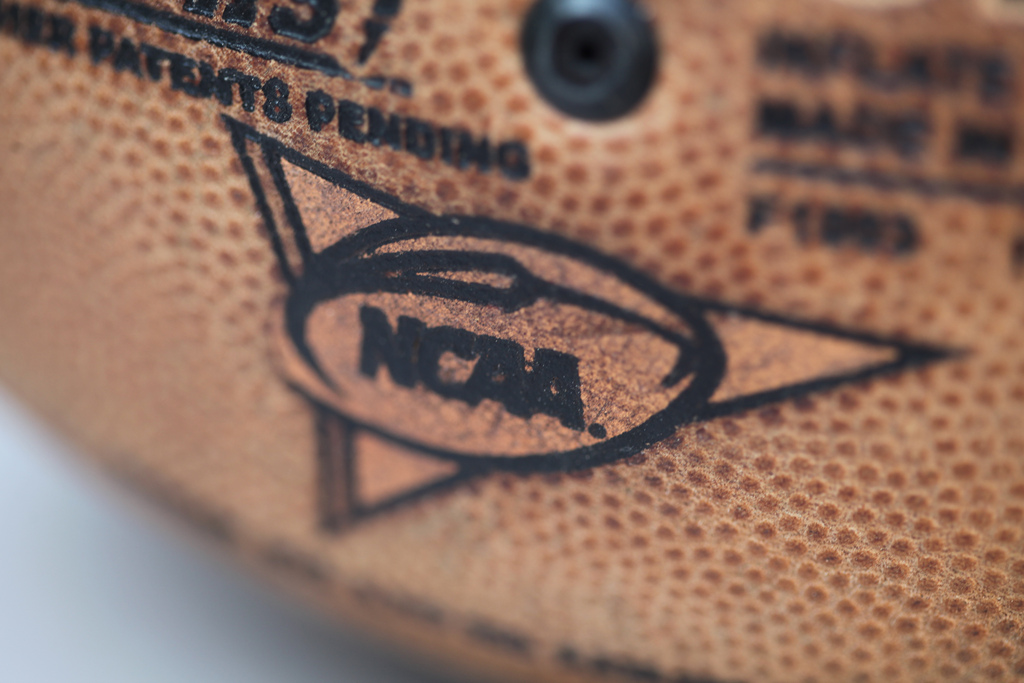
Image courtesy of Tom Woodward under CC BY-SA 2.0.
Athletics and sporting events are, on their face, frivolous diversions from the drudgery of daily life. They offer us opportunities to debate our friends on subjects that do not cause deep offense or thought. If we actually devote ourselves to participating in various sports, they provide their most significant benefit by helping us organize in activities that help us maintain our physical health.
Athletics and sports in America, however, are fueling destructive obsessions. The inordinate wealth and celebrity garnered by professional athletes is converting many youth sports leagues into training mills that initiate career tracks for aspiring child athletes. Such hopes have helped to birth an industry of training gadgets, sports schools, and instructional books and video tapes. The desire for athletes to cash in on their talents has driven demand for chemicals that supposedly enhance strength and agility.
Hopes for wealth is not specific to athletes. Gambling has become the most rapidly growing industry in America largely due to the social acceptance of sports wagering. Programs on sports television and radio outlets are devoted to advising gamblers to decrease their odds of placing losing bets. Newspapers carry betting lines on major sports. Fantasy sports leagues, often given passing endorsements by various leagues, are established to convert a season-long preoccupation into a profitable enterprise for the well-informed fanatic.
Business people find ways to absorb wealth from the national obsession. They become quite creative in marketing athletes and team logos on anything that can be sold so fans can display their loyalty to passersby.
There is perhaps no organization that has profited more efficiently from or contributed to abuses of America’s sports obsession than the National Collegiate Athletics Association. The NCAA is a nonprofit organization which, according to a six-part investigation by the Kansas City Star (kcstar.com/ncaa), has enjoyed an 8,000 percent increase in revenues over the past 23 years largely from the work of amateur athletes. The career benefits offered by athletic scholarships to major colleges regulated by the NCAA motivates many young athletes to prioritize athletic training over academic achievement and even attempt to chemically enhance their physiques.
Since the NCAA has contributed significantly to a national sports obsession, which is proving to be damaging to so many, their decision to take a moral stand on something as frivolous as team mascots is somewhat mystifying. The NCAA considers colleges that use “Native American images” are being “hostile or abusive”, so such logos and mascots have been banned from any NCAA championship events and the schools that keep them will not be allowed to host such events.
It is somewhat incongruous for a group of executives who are building their power and wealth from free labor to become indignant over a type of mascot which they have been selling at great financial gain on their licensed merchandise for decades. It is especially bizarre when held in context of the wide variety of Caucasian mascots sold on NCAA merchandise.
Consider, for example, the Oklahoma Sooners and Nebraska Cornhuskers. Sooner was a derisive name given to homesteaders racing across Oklahoma in the days of the land rush. Cornhuskers is a name similar in nature to Redneck–a traditional label given to manual farm laborers. The Cornhusker mascot from the, by the way, is a big, blond, husky farm boy.
Other erstwhile laborers are similarly glorified as team mascots. Boilermakers, as in Purdue, were named for men who built steam engine trains. That mascot is a muscular, apparently Eastern-European male carrying a sledgehammer. Purdue is just a short drive from South Bend where the Fightin’ Irish make their home. Its interesting that nobody has protested that name since the penchant for Irish folks for getting into fights is the butt of many jokes.
The Irish probably got their dander up when the Vikings attacked their land, stole their property and raped their women. Vikings were somewhat like Raiders who are not dissimilar from Pirates and Buccaneers. Civilization was made safe from these barbarians by the likes of Knights, Midshipmen, Cavaliers, and Musketeers.
Various European tribes who chose war and violence as a profession sprung from a heritage made up of Trojans, Spartans, and Centurions. Later the desire to settle new lands was spread to these shores by Commodores, Pilgrims, and Frontiersmen. Independence from those European bloodlines was won through the sacrifice of Patriots, Minutemen, and Volunteers.
As America grew up it found itself in a struggle fought between Rebels, Renegades, Yankees, Marksmen, and Cadets. Afterwards peace was restored through the ministry of Deacons.
Now that I brought it to the attention of the NCAA that not only Native Americans are the source of “hostility or abuse” maybe they will see to it that all NCAA schools end their insensitivity. Doing so will bring the NCAA take on the challenge of developing new merchandise with new logos to meet demands of all the old fans who need new gear to show their school loyalty and of new fans who are touched by their sensitivity.
Perhaps the cynical suggestion that NCAA executives are motivated to expand revenues is not fair. The organization can most certainly counter the idea with their efforts to control such problems that have gravitated around America’s sports industry. On the other hand, the possible sales of NCAA licensed merchandise developed from their decision on mascots might prove to the whole sports world that the NCAA is not just a bunch of pointy-headed professors with a liberal, politically-correct agenda, but a very shrewd board of directors that knows how to get a sports-obsessed nation to fill its coffers.
“Published originally at EtherZone.com : republication allowed with this notice and hyperlink intact.”